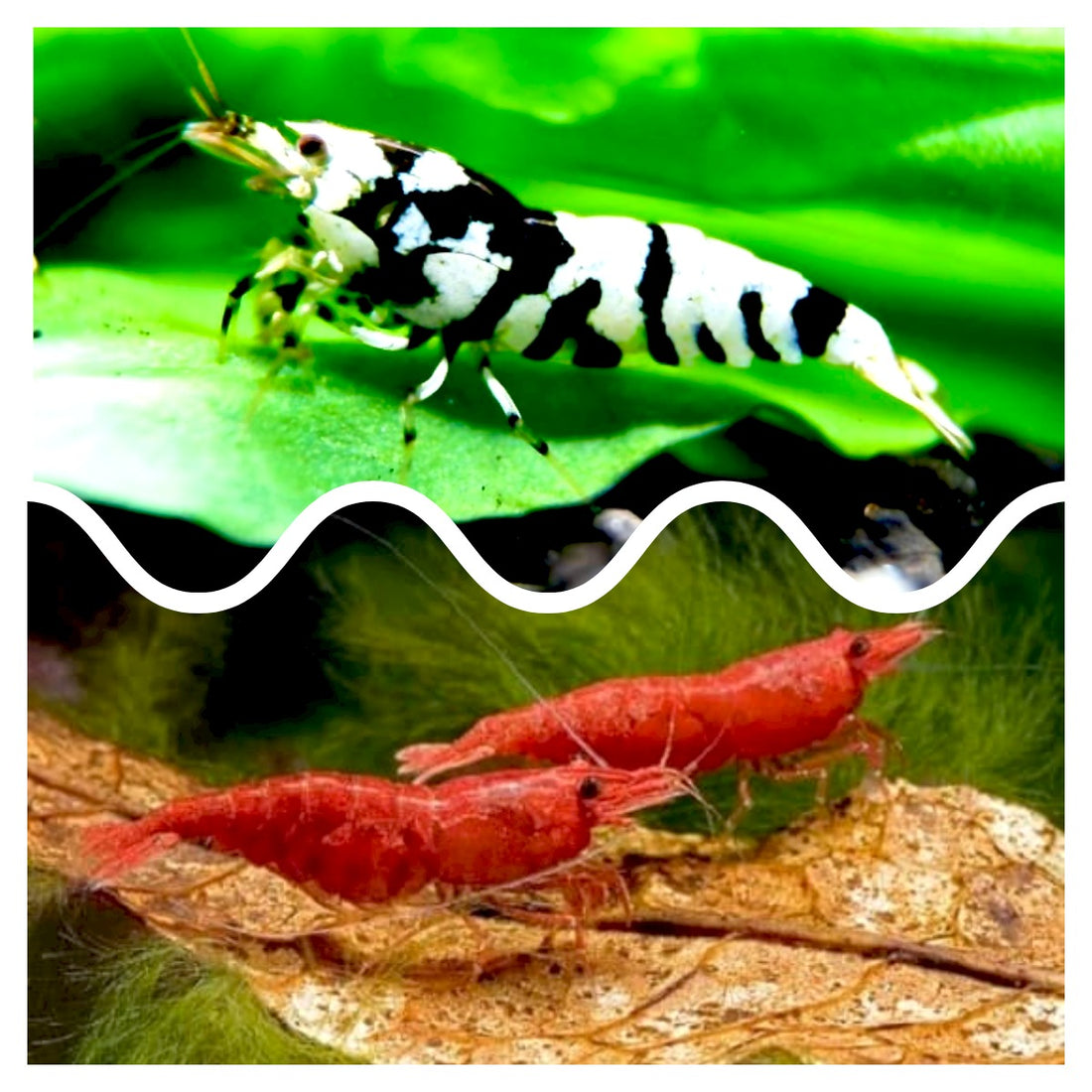
Neocaridina vs. Caridina Shrimp: Differences, Care, and Aquarium Tips
Share
Neocaridina and Caridina are two distinct genera of freshwater shrimp that are popular among aquarium enthusiasts. While they share some similarities, there are several key differences between them:
1. Habitat and Origin:
-
Neocaridina: Neocaridina shrimp are primarily found in freshwater environments. They originate from regions in Asia, including Taiwan and parts of China.

-
Caridina: Caridina shrimp encompass a wider range of species, some of which are native to various parts of Asia, including Southeast Asia, India, and even some islands in the western Pacific Ocean. Some Caridina species can be found in brackish or marine habitats.

2. Color Variations:
- Neocaridina: Neocaridina shrimp are known for their impressive color variations due to selective breeding. Popular variants include Cherry Red, Fire Red, Yellow, Blue Dream, and Green Jade. These shrimp exhibit vibrant and striking colors.
- Caridina: Caridina shrimp also come in various colors, but their coloration tends to be more natural and subtle. Common Caridina species, like Crystal Red Shrimp (Caridina cantonensis), often display variations of red and white stripes or patterns. The coloration of Caridina species is typically related to their specific habitat and is less diverse compared to Neocaridina.
3. Water Parameters:
- Neocaridina: Neocaridina shrimp are known for their adaptability to a wide range of water conditions. They can thrive in pH levels ranging from around 6.5 to 8 and can tolerate varying degrees of hardness.
-
Caridina: Caridina shrimp are more sensitive to water parameters and typically require more specific conditions. Many Caridina species prefer soft, acidic water with a lower pH (around 6.0 or lower) and very low hardness levels (often measured in degrees of GH and KH). Maintaining stable and appropriate water parameters is crucial for the health and reproduction of Caridina shrimp.

4. Breeding Behavior:
- Neocaridina: Neocaridina shrimp reproduce by giving birth to live young shrimp, which are miniature versions of the adults. This live-bearing reproduction method is relatively simple to observe and manage in aquariums.
- Caridina: Caridina shrimp typically lay eggs, which are carried by the female until they hatch. Hatching and raising Caridina shrimp from eggs can be more challenging and requires specific care and attention to water conditions.
5. Diet:
- Neocaridina: Neocaridina shrimp are omnivores and have a versatile diet. They graze on algae, biofilm, and detritus in the aquarium, and they can also consume commercial shrimp pellets and blanched vegetables.
- Caridina: Caridina shrimp are also omnivores, but their specific dietary requirements may vary depending on the species. Some Caridina species have more specialized feeding habits and may require specific types of food, such as specialized shrimp foods or live microorganisms.
In summary, the key differences between Neocaridina and Caridina shrimp revolve around their habitat, coloration, water parameter preferences, breeding behavior, and dietary needs. It's essential for aquarium enthusiasts to research and provide the appropriate care based on the specific type of shrimp they plan to keep in their tanks.
